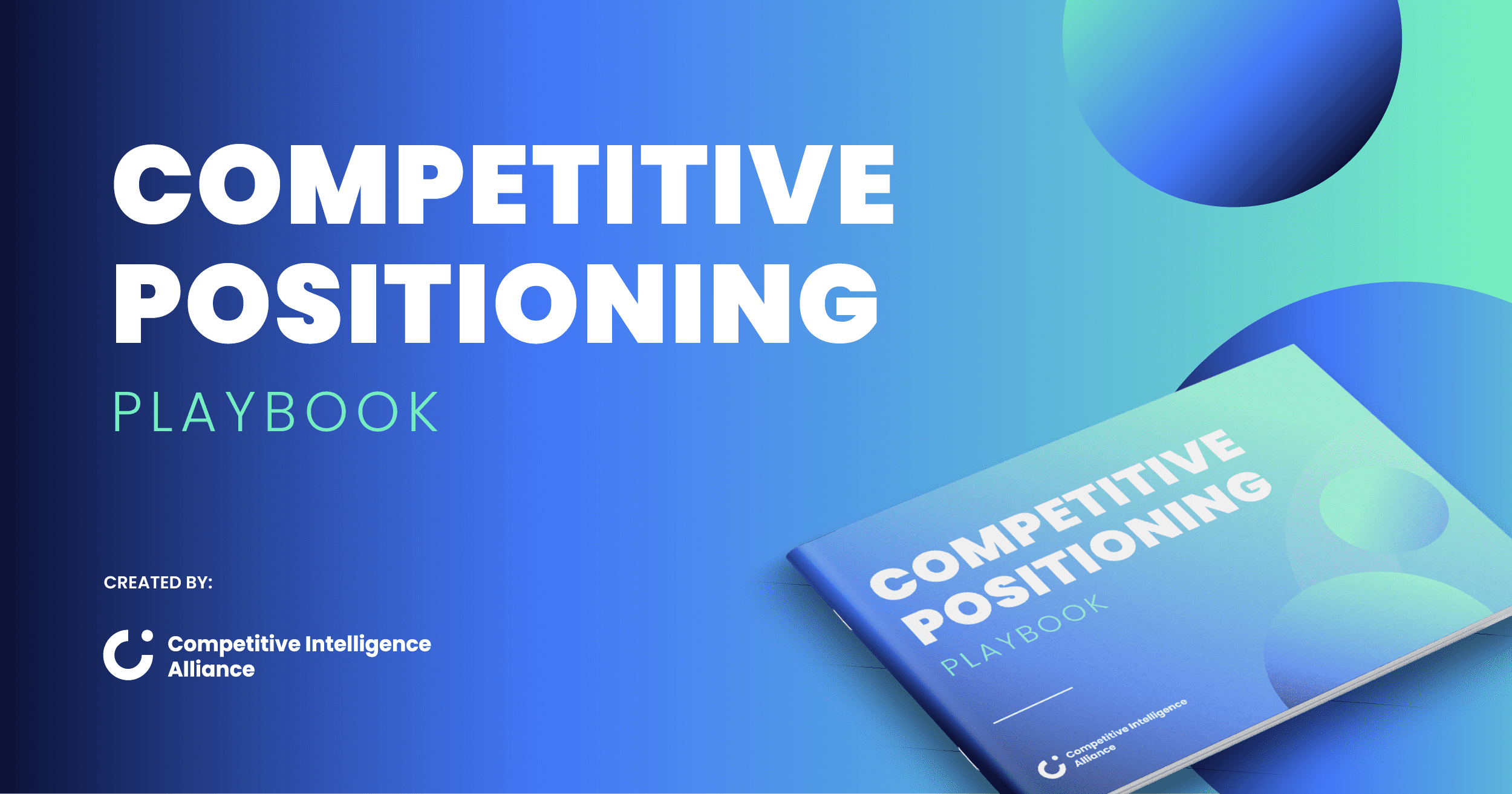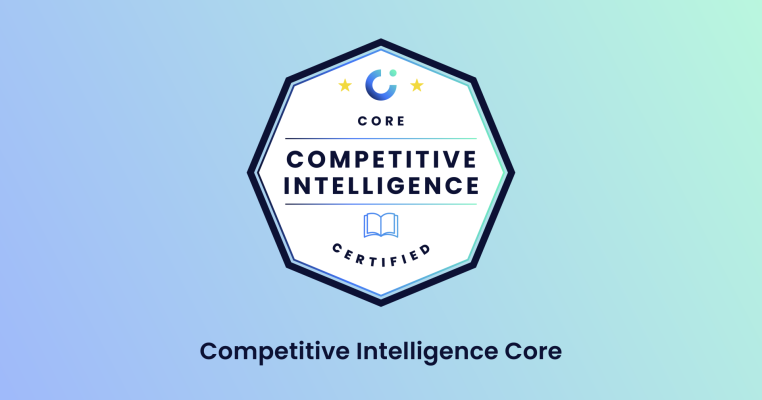As a competitive intelligence pro, you’re likely hyper-aware of what’s going on in the market, but are you missing a crucial piece of the puzzle? Analyzing your competitors is key, but understanding your customers' needs, behaviors, and motivations is arguably even more crucial.
After all, it’s the target audience that’s informing your competitors’ strategies. Just like you, they’re trying to win the hearts, minds, and wallets of their chosen market. If you can understand customers’ motivations better than your competitors, you’ll be well-placed to deliver stronger solutions to their pain points and win market share away from your rivals.
To that end, your customer research is the key to delighting your audience and outmaneuvering the competition.
Let us show you how. 🤿
What is customer research?
Customer research aims to learn more about the needs and behaviors of customers and to use that information to create products, features, and messaging that resonate with them. In other words, customer research helps you sell your products by tailoring your approach to the needs of your customers.
Customer research typically involves more qualitative approaches like in-depth interviews, ethnographies, usability testing, social listening, and feedback surveys. The goal is to gain specific insights into the end-user experience with a company's brand, products, services, and communications.
While market research and customer research are often spoken about in the same breath, they’re not the same. Market research explores the wider marketplace, while customer research focuses on:
(i) Your customers themselves, and
(ii) Your interactions with them.
Key questions customer research can answer include:
- Who are your customers and ideal buyer personas?
- What are their daily challenges, needs, and desires?
- How do they feel about your company and its competitors?
- What excites them or frustrates them?
- How can you improve your customer experience?

The advantages of customer research
While market research works top-down to size up opportunities, customer research works bottom-up to optimize the customer experience. Its strategic power comes from providing a detailed view of real people that market data alone often misses.
Armed with this granular feedback, businesses can:
- Fine-tune their buyer personas
- Create tailored marketing campaigns
- Drive referrals and boost loyalty
- Develop customer-focused products
- Identify new opportunities
- Guide business decisions
Let’s explore how.
Fine-tuning buyer personas
Buyer personas represent different consumer groups that make up your broader target audience. They include details on demographics, attitudes, behaviors, pain points, and brand perceptions.
This data comes straight from talking to living, breathing customers through interviews, focus groups, and surveys. Vivid personas should guide product design and all marketing decisions.
Crafting tailored messaging
Communicating effectively starts with understanding motivations. Customer interviews and focus groups provide context on why people buy certain products and what messaging best resonates with their needs or desires.
These perspectives enable your teams to craft relevant, compelling messaging and campaigns that get results by appealing to prospects' core desires, and tying features back to emotional benefits. They also reveal how customers describe your products in their own words, which can be integrated into selling points.
Driving referrals and loyalty
Loyal customers spend more and refer others. But you can’t engender true loyalty without delighting people with outstanding products, services, and support.
In-depth customer feedback exposes pain points and unmet needs you can address to boost satisfaction. It also uncovers potential new offerings or upgrades to make customers raving fans.
Improving products and services
Usability testing and customer co-creation sessions help optimize every aspect of your offerings. Seeing real people interact with products provides insights that lead engineers, designers, and product marketers would never uncover on their own.
Identifying new opportunities
Customer research also illuminates latent needs and new product ideas you may never have considered. These seeds often sprout into disruptive innovations or entirely new lines of business.
Guiding business decisions
Customer perspectives provide tangible guidance on where to invest resources versus where to cut your losses. Their feedback should steer everything from new market entry to brand repositioning.

No product is created in a vacuum
The Competitive Positioning Playbook teaches you...
👷 How to blend CI and customer research for a rock-solid positioning strategy.
🙅♀️ The three steps you must not skip in crafting competitive positioning.
🪛 A top-to-bottom tear down of the positioning process, and how CI fits in.
🏹 How to use competitive positioning to shatter your org’s revenue ceiling.
Interested? Click the button right now to check it out.
How to conduct effective customer research
So, we know customer research is important, but how exactly do you carry it out? Here’s a six-step guide to uncovering those all-important insights:
1) Define your goals
First, pinpoint the questions you need to answer. Is it about improving customer retention? Identifying new product opportunities? Optimizing pricing? Defining your goals upfront is crucial to gathering the right kind of data.
2) Choose your research methods
Select techniques that best provide the insights you need. Some possibilities include interviews, focus groups, surveys, usability testing, ethnographies, and social listening.
Why not mix quantitative surveys with qualitative insights? Surveys easily gather wide-ranging feedback from many customers, while open-ended interviews and ethnographies provide the understanding needed to transform findings into human-centered insights. Balance both for a holistic perspective.
3) Ask the right questions
Craft questions that will guide upcoming strategic decisions. For interviews, focus groups, and usability tests, prepare open-ended questions that support your research goals. And be sure to avoid jargon and keep your language conversational.
4) Define your sample
It’s essential to gather the opinions of those who matter, i.e. people who match your buyer personas. To get a good sample, here are some guidelines we recommend you follow:
- Aim for 10 participants per buyer persona: Depending on your audience, you may need to target multiple personas. Be sure to source separate sample groups and include roughly 10 people in each.
- Search recent surveys: If you’ve carried out a survey recently, use it to your advantage. Those participants have recently interacted with your company, so their recollections may be more reliable.
- Mix it up: While a sample formed entirely of your loyal fan base may massage your ego, it’ll compromise the quality of your market research. So, mix it up a little, and seek a variety of opinions. Include people who’ve purchased your product, people who opted for your competitors, and people who may be on the fence. Get out of your comfort zone, put on your hard hat, and prepare for a mixed response; criticism is your friend, not your enemy.
5) Engage your participants
Market research firms have catalogs of potential participants at their fingertips, but not every company has the same luxury – meaning you need to get your hands dirty and find people yourself.
That may sound like a hassle, but don’t worry – here are some tips to make recruiting participants easier:
- Use incentives: People like to be compensated for their time, and a small incentive will make them more likely to take part in your research. Whether it’s a small cash payment or a shopping voucher, it’s a small price to pay to get your study over the line. If you can’t afford to offer incentives, give them access to exclusive content, or discounts on future purchases.
- Be social: Twitter, Facebook, Instagram, and LinkedIn have one thing in common: they bring together your fans and followers in one place, meaning you can send a blanket rallying call asking for support – piece of cake!
- Use your CRM: Your CRM system should be your best friend when it comes to picking a sample. With the click of a button, you can filter your customers by time period, company size, account type, etc., and contact the relevant people for your study. Also, be sure to liaise with sales teams if you need help accessing accounts.
- Spread the word: Whether it’s your family members, friends, or colleagues, tell everyone you can think of you’re conducting a study and need help. Share posts on LinkedIn and ask others to like and share, and before you know it, your initial post will reach thousands of prospective respondents. The more creative you are, the more people you’ll attract.
6) Analyze and share your findings
Don’t silo research within a single department – be generous with your knowledge! Make sure all teams apply insights to enhance products, services, and experiences. Look for key themes, insights, and representative quotes. Produce an executive summary, then disseminate learnings across all teams to drive solutions.
Conclusion
Let’s wrap up with a quick recap of our top tips for successful customer research:
- Mix quantitative surveys with qualitative techniques for comprehensive data.
- Engage both current and potential customers to avoid confirmation bias.
- Observe real customer behaviors as well as soliciting opinions.
- Keep an open mind to learn something new rather than validating assumptions.
- Make the research experience positive to build goodwill.
- Follow up with participants to share how their feedback impacted business decisions.
Your ears should always be open to feedback.
The more your company listens to customer perspectives, the better it will understand and serve its market.
Over time, you’ll spot insights faster and research efforts will scale. But avoid analysis paralysis – take action on the feedback you receive to maximize its value.
Give yourself an unfair advantage
Our newest competitive intelligence course lifts the lid on the frameworks and processes experts use to deliver impactful intel with confidence.
You can expect:
- A 100% self-paced and online course packed with competitive wisdom so you can stop worrying and start winning.
- Bonus features from established competitive professionals to give you an unfair advantage.
- 6 downloadable, customizable templates and frameworks that make analysis a cinch.

Competitive Intelligence: Core
We'll show you how to:
- 👑 Lead development of your org’s all-important competitive positioning.
- 🦾 Master CI’s essentials, including its most powerful research techniques.
- 🚀 Arm sales and customer success with intel to skyrocket win rates and turn down churn.
- 🧠 Offer leaders critical intel that informs their decision-making and strategy.
- 📈 Elevate CI’s role within your org to ensure career progression.






.png?v=56e5ac1685)